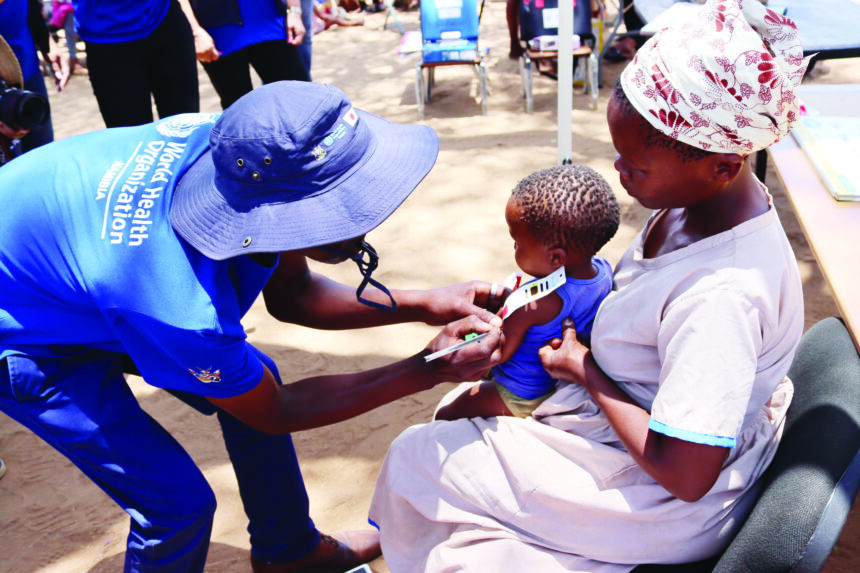Poverty eradication minister Doreen Sioka said malnutrition, food insecurity and inadequate healthcare are pressing issues that disproportionately affect vulnerable populations.
The current statistics show a bleak picture, which indicates 4 188 cases of malnutrition in children under five years old, as well as women diagnosed with anaemia in 2023.
“Despite our many strengths, there remains an urgent need to address the nutritional and protective needs of our most vulnerable populations. Access to quality nutrition and protection services is fundamental to the health and well-being of every individual, especially women and children. However, many in Namibia continue to face barriers to these essential services,” she said.
The project is an initiative by the World Health Organisation (WHO) to address food insecurity in the Omaheke region.
It is supported by Japan through the WHO as a partner, with the health and poverty eradication ministries as implementing partners.
Speaking during a field visit to Gobabis to assess the impact of the project, Sioka said there is a need to ensure that every woman and child has access to nutritious food.
This involves supporting local agriculture, improving food distribution systems, and educating families about balanced diets.
“Access to quality healthcare is crucial. We must invest in healthcare infrastructure, train healthcare workers, and ensure that services are available and accessible to all, particularly in rural areas,” stated the lawmaker.
Japan’s ambassador to Namibia Hishimaki Hisao said they pledged N$9.3 million this year.
“The government of Japan, in partnership with the ministry, has consistently supported Namibia’s health sector, contributing over US$1.5 million from 2019 to 2023 to combat the hepatitis E outbreak, sustain essential health services during Covid-19, improve nutrition and health for women and children, strengthen the protection of women and children against violence, and increase access to quality healthcare services for vulnerable populations through outreach services,” he noted. He added that the project aimed to reach 34 681 vulnerable children under five, and 15 795 women of reproductive age across the Omaheke, Khomas and Kunene regions, providing vital nutrition interventions.
WHO representative Richard Banda said through the project, there has been increased access to nutrition interventions to prevent and manage malnutrition among women and children by conducting the Africa Vaccination Week in the Omaheke and Khomas regions.
“There has been the strengthening of community awareness of nutrition interventions, and we mobilised communities for outreach health services through the training of community health workers,” he said.
Health minister Dr Kalumbi Shangula noted that recent epidemiological data reveals alarming rates of child stunting and wasting, which require urgent interventions.
The Namibia Standardised Monitoring and Assessment of Relief and Transitions (SMART) Survey of 2024 by the health ministry states that stunting prevalences range from high in Zambezi to very high in the Hardap region.
“Out of the 14 regions, the stunting prevalence was found to be very high in Hardap, Kharas, Omaheke, Omusati, Oshikoto and Otjozondjupa. The underweight prevalence was reported high in the Oshikoto, Omaheke, Omusati and Otjozondjupa regions. The prevalence of overweight was reported highest in Erongo and lowest in Omusati, Oshana, Kavango East and West, as well as Oshikoto regions,” he highlighted.
“The launch of this project on 15 April 2024 marked a pivotal moment in our fight against malnutrition. By allocating N$8 million, we sought to extend nutrition interventions and social protection services more comprehensively. Central to our efforts is the development of healthcare workers’ capacities”, Shangula said.
-psiririka@nepc.com.na


